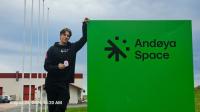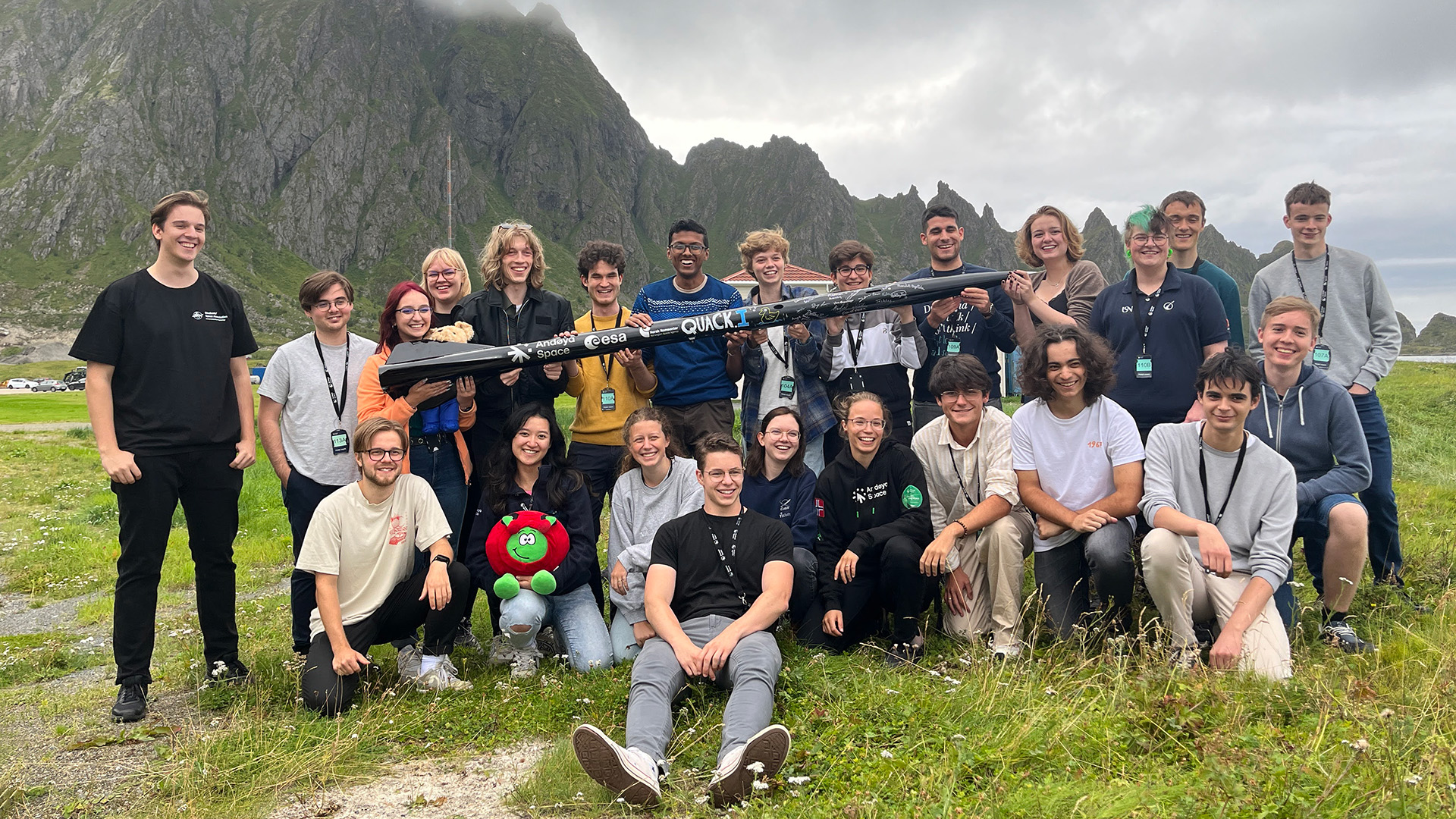A WUT student will participate in the "Fly a Rocket!" program
Bartosz Rylski, a second-year student at the Faculty of Power and Aeronautical Engineering (Aerospace Engineering), was the only representative from a Polish university to qualify for the prestigious European Space Agency (ESA) program. He participated in the launch campaign of a student rocket.
“Fly a Rocket!” is an initiative in which students from across Europe build, test, and launch a rocket they have previously worked on. The program is conducted by ESA in collaboration with Andøya Space Education and the Norwegian Space Agency.
A total of 100 students representing 25 ESA member countries were selected to participate in the online course of the program. Throughout the course, they explored topics such as rocket dynamics, atmospheric physics, soldering, telemetry, and the fundamentals of rocket flight simulation. Following the online training, students tackled a series of tasks that covered issues related to rocket dynamics, numerical flight simulations, electronics, and measurement systems. These tasks were diverse and challenging, requiring both precision and thoughtful consideration of the underlying problems. Afterward, 24 students traveled to Andøya Space to participate in a hands-on rocket launch campaign.
Unique campaign
Participants were divided into four different working sections. The "Flight Simulation" section focused on assembling the IMU and GPS sensors and conducting trajectory simulations, providing essential data for the mission. The "Telemetry" section set up and operated the telemetry stations, ensuring real-time data reception during the flight. The "Payload" section integrated and tested sensors inside the rocket, while the "Sensor Experiments" section prepared and calibrated the sensors, including meteorological balloon probes.
Bartosz Rylski led the "Flight Simulation" group, where he worked on creating and testing the GPS unit, refining the Python code for flight simulation, and utilizing data from meteorological balloons. He collaborated closely with other teams to determine sensor placement and measurement ranges, while also conducting team meetings. During the launch, he was stationed at the Science Center, overseeing the preparation, equipping, and countdown procedures alongside the team and engineers from Andøya Space.
Unlike typical rocket campaigns, the scientific objective of the student rocket was not predetermined; instead, the students had to coordinate their efforts to define the scientific cases they wished to investigate using the available sensors. Bartosz served as the Principal Investigator, responsible for coordinating and selecting the research objectives for the campaign, as well as overseeing the quality of the data collected from the rocket.
Time to launch!
Ultimately, the rocket was launched on August 22. The students had the opportunity to participate in the countdown procedure. During the launch operations, they took over various ground stations, sitting alongside experts from Andøya Space, who guided them through the entire process when necessary. After about an hour of countdown, the student rocket took off, reaching an altitude of 9,372 meters and exceeding Mach 2 before splashing down in the Norwegian Sea. The onboard sensors collected valuable atmospheric data throughout the flight, which was transmitted to Earth in real time.
The final day of the campaign was dedicated to analyzing the collected data and providing a preliminary presentation of the results. After the launch campaign, the students will collaboratively work on preparing the final report based on their findings.
Participant's Reflections
– “Fly a Rocket!” was an incredible experience, made possible for me by the knowledge and skills I gained as a member of the Students' Space Association, which I’ve been part of since the beginning of my studies – describes Bartosz Rylski. – At its core, this program aligns perfectly with what we do in the Rocket Division, where we design rockets from a concept to flight.
– My passion for space exploration began around middle school when I started to develop an interest in astrophysics and the cosmos. I read many books and asked countless question – recalls our student. – Eventually, I posed the most fundamental question: „How did we even get into space, and how do we know all this?” – That’s where it all started, and that’s why I chose to study at this particular faculty and program.
This is not the end of Bartosz's space adventures; he has ambitious plans ahead.
– With the knowledge acquired through this program, along with other exceptional engineers and future engineers from the student research group, we will develop even more exciting and advanced projects – Bartosz announces. – At this moment, we have two goals: a competition where we will have the opportunity to test our skills on a global scale using the Twardowsky 2 rocket, and the REXUS/BEXUS program, which is the next step after “Fly a Rocket!”









